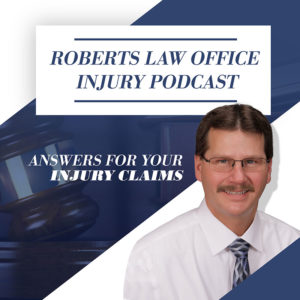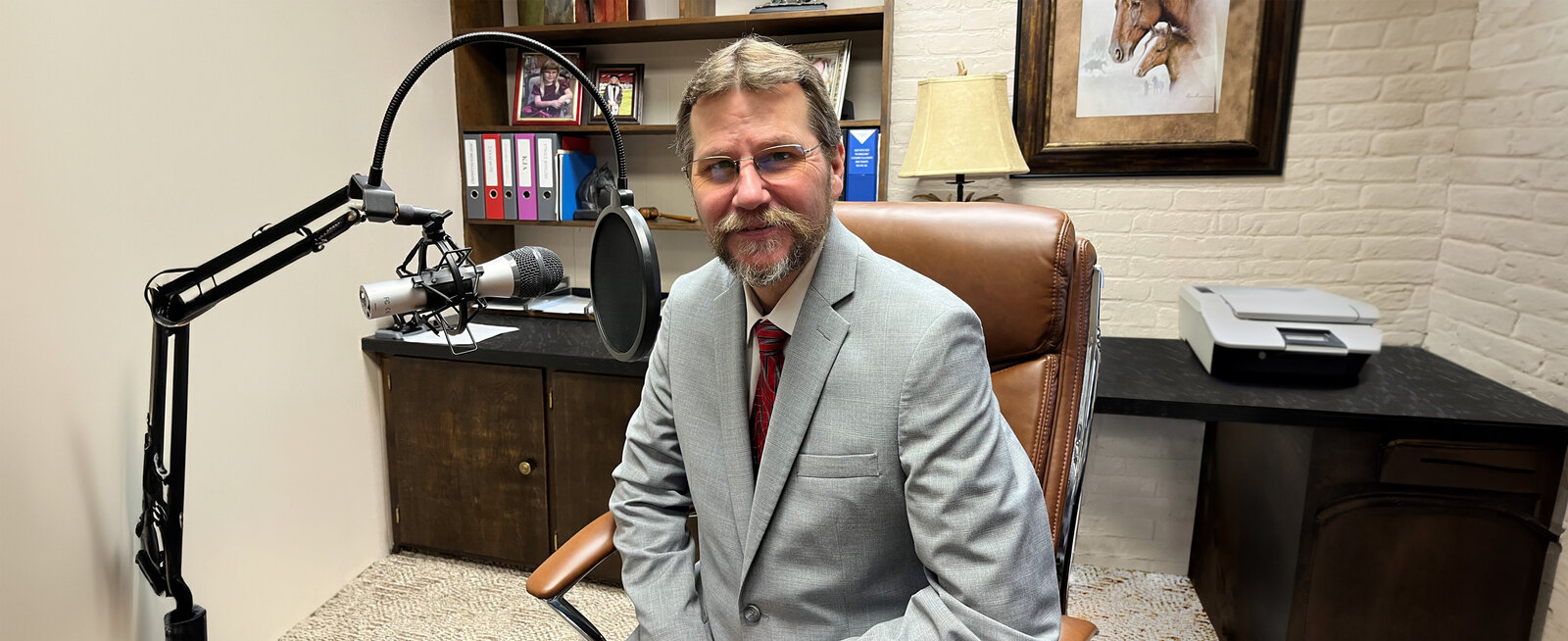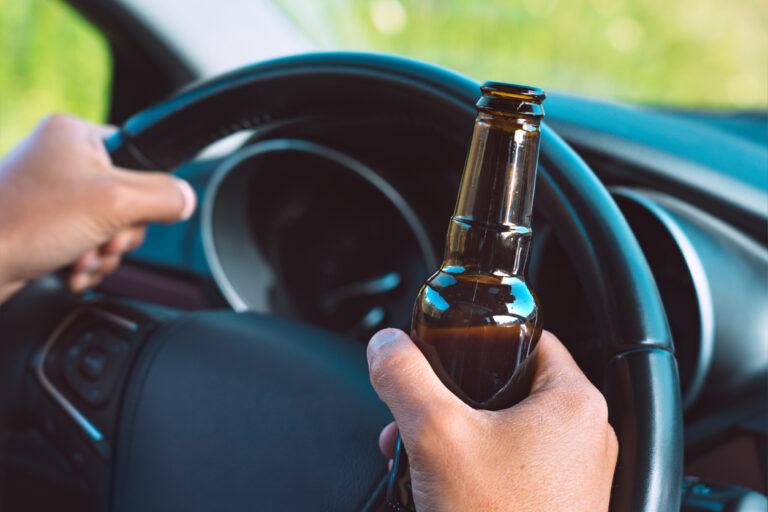Episode 63: Calloway County injury attorney Jeff Roberts has offices in both Murray and Hopkinsville, Kentucky. He’s handled motor vehicle accident cases for over 30 years. In today’s episode, Jeff discusses the complications involved in multiple vehicle collisions. How to you determine which driver was negligent and who’s insurance is going to pay for your damages? Let’s join Jeff for some perspectives and answers.

Different Varieties of Multi-Vehicle Collisions
Jeff explains that the reasons these types of wrecks happen can easily vary. Some are on busy interstates, state highways and county roads, such as I-24, the Western Kentucky Parkway, the Purchase Parkway, 641 and many others. At other times, multiple vehicle collisions can occur on city streets.
One variety stems from road conditions. This is especially true during the winter when roads are icy or slipper due to snow. This also applies to situations involving rain and/or fog.
Another reason for multi-vehicle collisions is the fact that one driver was not paying attention. A distracted driver could easily rear-end a car that was stopped or slowing. This often happens when the driver of the second car was texting while driving.
In the above scenario, a car may swerve to miss the car in front of them, but crashes into a car in the adjacent or on-coming lane.
On roads involving higher speeds, these chain reaction collisions can occur quickly, often with devastating consequences.
Determining the At-Fault Driver
Jeff admits that in can be difficult to determine exactly who was the negligent driver. In a multi-vehicle wreck, there could be more than one party to blame. Kentucky is a pure comparative fault state. Practically speaking, in a multi-party collision, the jury can consider all of the vehicles and attribute fault to one or more of the drivers.
In a pure comparative fault situation, the jury could decide that each of the cars is at-fault and assign a percentage of the blame to each driver. For instance, if 5 cars are involved and the jury determines each is 20% at-fault, the drivers would only be able to recover 80% of their damages (100% – 20% = 80%). At the same time, they would also be responsible for 20% of the damages paid to the other driver(s).
Jeff gives an example of a case he handled involving a semi-truck on I-24 that was driving too fast for the winter conditions. He lost control and jack-knifed the truck near a passenger vehicle. The passenger vehicle attempted to avoid the truck but was unable to do so. Other vehicles then began colliding with cars at/near the tractor trailer.
Jeff was able to prove that the passenger vehicle (his client) was almost at a complete stop when it collided with the large truck. The third car was also unable to stop before colliding with the passenger vehicle. Then a 4th car impacted the 3rd vehicle, causing it to impact the passenger vehicle again. There were additional collisions, including 2 more semi-trucks. Jeff recalls there were 8-9 vehicles involved. Multiple factors were involved including icy conditions, time of day and people driving too fast for the road conditions. It was determined that several of the cars were at-fault based on speed and the fact that they were following too closely for the weather conditions.
A Rear-End Collision Isn’t Always the Fault of the 2nd Car
Jeff clarifies the myth of that the rear car is always at fault, it’s actually true. That’s not the law. However, it is quite common that the 2nd car is at-fault. Consider the situation in which a car is stopped in the roadway, just beyond a sharp curve. If the second driver rounds the curve and collides with the first car, Kentucky law prohibits a vehicle from simply stopping in the roadway. The negligence could then be attributed to the driver of the first car.
The above example wouldn’t apply to a car that’s stopped to make a left-hand turn before being hit by a second car. The details and fact matter.
Using an Accident Reconstructionist
Injury attorneys may decide to hire an accident reconstructionist to analyze the crash site and vehicles to determine what happened and how it happened.
Most vehicles today have a “black box” which records the vehicle’s data leading up to the collision. It’s very similar to the technology used in an airplane. An accident reconstructionist can download this data and use it to determine what the vehicle was doing before it collided with the other car. This evidence is extremely valuable in determining which vehicle was at-fault in causing the damage and resulting injuries.
Based on the extent of the injuries, Jeff may also use bio-mechanical experts and medical experts to assist in attempting to prove what happened and how those factors contributed to the ultimate demand Jeff will make to the insurance company regarding the fair value of the case.
Listen to Jeff’s episode focused on safe driving tips around tractor trailers.
Collisions with Tractors and other Farm Equipment
In Western Kentucky, it’s not uncommon to encounter tractor or farm equipment while driving. It’s especially true during the planting and harvest seasons. This may include combines, grain trucks, tractors pulling wagons and/or hay bales and many others. These vehicles often move more slowly. If you’re not paying attention, you could collide with them or get into an accident while swerving to avoid or passing.
It’s possible the person driving the farm equipment may be at-fault but it may also be due to the negligence of the passenger vehicle or motorcyclist.
Listen to Jeff’s episode on traffic fatalities. These tragic results happen on Kentucky roadways and may have been avoided if the drivers were more attentive or could have driven appropriately, based on the road conditions and weather. This may not have been possible at the time of the collision, but the information Jeff provided in that episode may be helpful for families of someone who tragically died in a motor vehicle accident.
Jeff also recorded an episode on the rights of a passenger in an automobile accident. While you wouldn’t necessarily think a passenger would be responsible for a collision, that same passenger does actually have rights when they are involved in a motor vehicle accident.
Jeff explains that even if the driver is 50% at-fault in the car wreck, the passenger is usually 100% not at-fault and therefore eligible to have all of his/her damages covered. This even applies to single car collisions, in particular.
Animals in the Roadway
In our area of Kentucky, it’s not uncommon to see a deer, dog or other animal in the road. Unfortunately, collisions can occur when the driver swerves into another lane to avoid the animal and gets into a collision with a vehicle in the adjacent or on-coming lane. This can also lead to a situation involving a multiple vehicle collision.
Interestingly, while you can’t file a claim against the deer, you may have a claim against the owner of a cow or horse that was standing in the roadway at the time of the accident.
There are many issues and factors involved in resolving a traffic accident case. Having an experienced attorney to represent you can help to ensure you are fairly compensated for your injuries and property damage. The expenses related to medical treatment alone can be significant. You may have lost wages due to the time off of work. And remember, Jeff explains that your insurance company may be able to recover the money it paid from any treatments they covered on your behalf. Many people fail to consider this when they are deciding whether or not to hire an attorney for their accident case.
You have rights according to the law. However, if you’re not aware of those rights, don’t expect the other driver’s insurance adjuster to explain them to you. An experienced attorney can better present the facts and negotiate a fair settlement (or represent you in court) to try to ensure the best possible outcome for you.
Jeff Roberts Represents Injured Clients Throughout Kentucky
With offices located in Calloway County and now Christian County, Jeff has a history of representing personal injury clients, workers’ compensation clients and social security disability clients across the state. He’s represented clients from Paducah, Bowling Green, Louisville, Covington, Whitesville and many other Kentucky locations. He’s not just a Western Kentucky injury attorney.
We hope you found this episode insightful and helpful. Thank you for listening!
Is It Time to Speak with an Attorney about your Accident?
The office phone number is (270) 753-0053 or toll free at 800-844-5108. For more information, visit www.JeffRobertsLaw.com. This podcast is meant to provide information and is not legal advice. Jeff’s principal office is located at 509 Main Street, Murray, Kentucky. Co-host Jim Ray is a non-attorney spokesperson. This is an advertisement.





